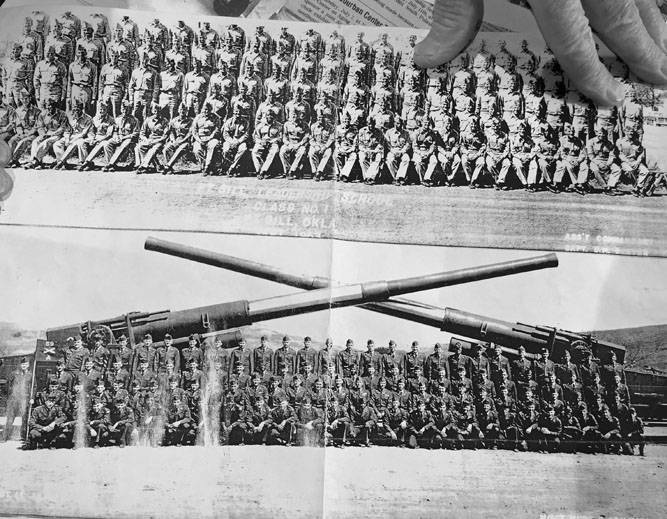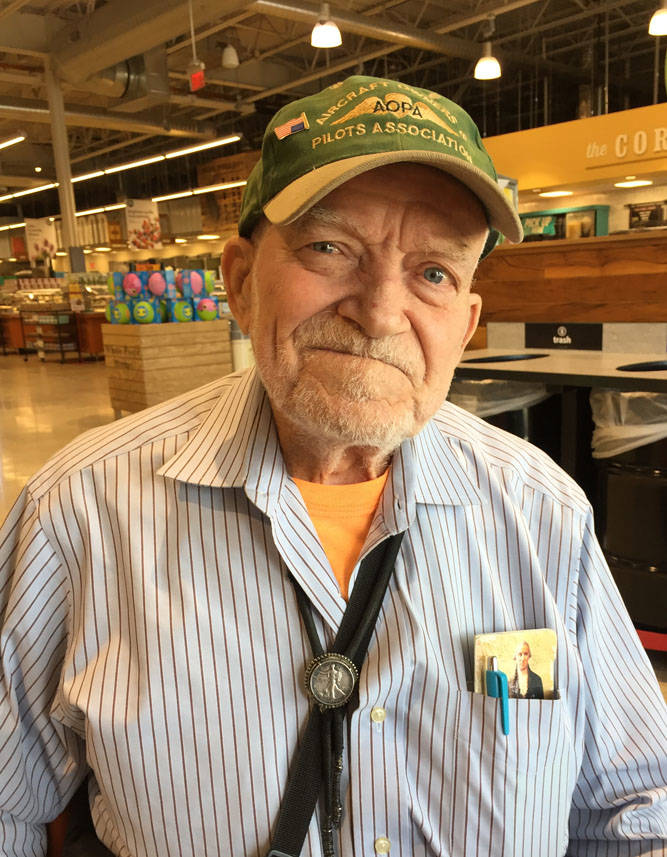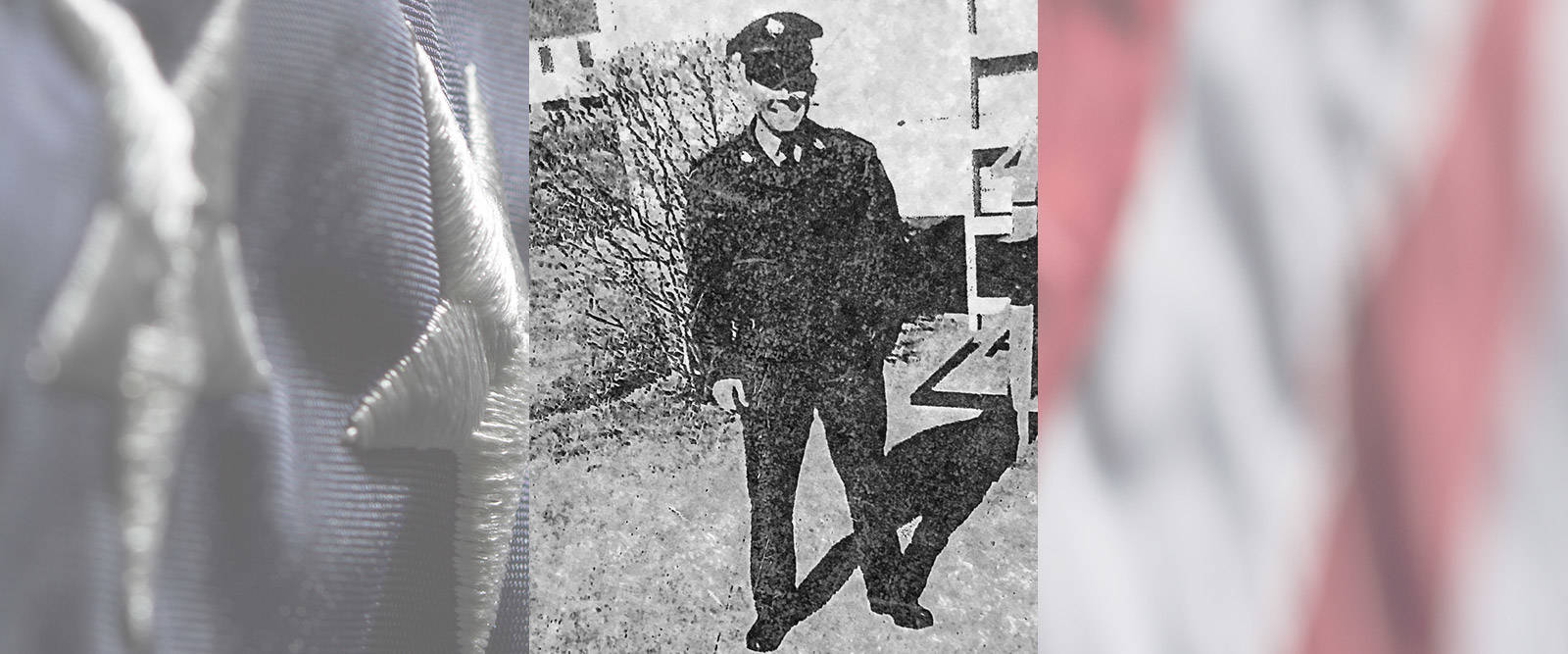U.S. Army Korean War Elmhurst, IL Flight date: 05/09/18
By Mark Splitstone, Honor Flight Chicago Veteran Interview Volunteer
Not many people can say that they’ve been within three miles of a nuclear blast, but Donald Bennett is one of them. Don, born in southeastern Missouri in 1931, is the son of a farming family. Unfortunately, both of Don’s parents died when he was young. He moved to Elmhurst, Illinois to live with an older half-brother. During high school, Don worked part-time in construction jobs, mostly plastering. After graduation from York High School in 1950, he worked full time in construction pouring concrete and other tasks before he was drafted into the Army in 1952.
Don went to Camp Chaffee in Arkansas for Basic Training. After Basic, many of Don’s buddies were sent directly to Korea. Don was assigned to Advanced Artillery School in Fort Sill, OK. While there, he was trained on a number of different artillery pieces, including the 105 mm and 155 mm howitzers. During the Korean War, soldiers from the South Korean Army came to Fort Sill to be trained on these weapons along with our soldiers.
While most of the weapons Don trained on would have been familiar to many veterans of both WWII and the Korean War, there was one weapon that was very unusual: the M65, which was a 240mm atomic cannon nicknamed “Atomic Annie.” It was the first American artillery piece capable of firing a nuclear device; it was 84 feet long and weighed 83 tons! Because of its large size and weight, it would sink if it left the road. It had to be moved with two “prime movers,” which were special tractors designed to move artillery. Don’s role was to drive one of these prime movers.
While still stationed at Fort Sill, Don and his team were ordered to go to an Army site called Camp Desert Rock, not far from Las Vegas in the Nevada desert. He remembers that on May 25, 1953, they were sent to a nuclear test site called Frenchman Flat for a test of “Atomic Annie.” After preparing the weapon to be fired, they were ordered into a trench and told to close their eyes and cover their faces with their forearms. After the atomic artillery fired its weapon, the shell landed and detonated about three miles from where Don and his fellow servicemen were huddled in the trench. Even though they had their eyes closed and forearms over them, Don says the blast was so bright that you could see it right through your arm.


When the dust settled, a soldier in a protective suit got out of the trench with a Geiger counter. After performing some measurements, he declared that everything was safe! Don and his fellow soldiers were ordered to ground zero where they walked around, picked up some rocks and dusted them off. Then they climbed into trucks to go back to their base. The entire time they were doing this they had no protective gear and were breathing the dust-filled air that was presumably contaminated with radioactive materials. He’s still not sure what the point of going to ground zero was, but that’s what his orders were so that’s what he did. This was the first and only time that a nuclear weapon was detonated after being fired from a cannon. Although they were only in Nevada for three weeks, Don and his buddies did manage to visit Las Vegas which he really enjoyed.
By the time Don got back to Fort Sill, his enlistment was almost up and the the Korean War had ended in July of 1953. Don jokes that the North Koreans heard he was coming over so they stopped the war. Don had been promoted to an acting Sergeant and he was encouraged to re-enlist. Had he done so, he would have been assigned to a base in Germany with his unit. Don decided that two years in the military was more than enough.
Over the years, more was learned about the potential impact of atomic radiation and Don joined a group called the National Association of Atomic Veterans. It is made up of servicemen and women who had been exposed to radiation. He noticed that many men in his unit were getting sick and dying of cancer. Don was concerned that it was due to the radiation that they had been exposed to in 1953. Although the veterans fought the government for a long time on this issue, it wasn’t until the late 1980’s and early 1990’s that the government finally started being more transparent.
After the war, Don returned to Elmhurst. He never married, mostly, he says, because he could never find a woman who “would put up with his nonsense.” He spent most of his career in construction related trades and also spent time in real estate. This included buying houses, fixing them up, and then reselling them. He tried office work but says that he preferred something more physical.
Don loves to travel and has been all over the world. He especially liked Guatemala, and on one visit there in the 1990’s, he managed to make it over to Cuba, which he was not supposed to do. Another one of Don’s passions is flying. He used the GI bill when he got back from the Army to attend pilot’s school, learning how to fly small planes. He loved flying so much that sometimes, at the spur of the moment, he and a friend would go get lunch at an out-of-town restaurant. He called it his “$100 hamburger.” Unfortunately, because of a knee injury, he had to give up his flying about five years ago.
Don remains very physically active and gets a lot of exercise and tries to eat properly. He’s involved in politics and meets with old friends on a regular basis to talk about health issues, current events, and politics. Given the exposure he had to radiation at a young age, he’s appreciative that he’s lived this long.
Thank you Don for sharing your story about surviving “Atomic Annie.” Enjoy your well deserved day with Honor Flight Chicago.



